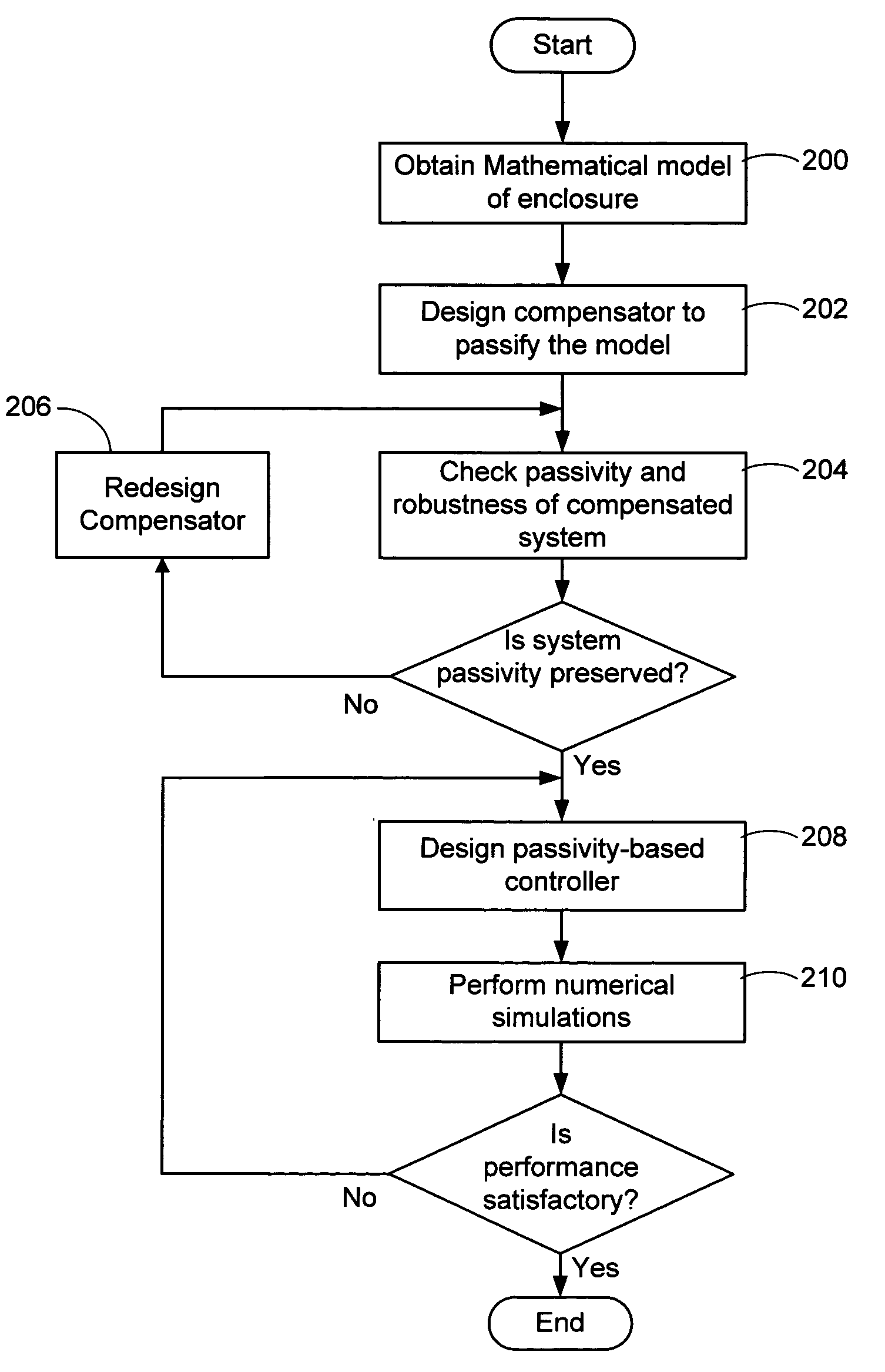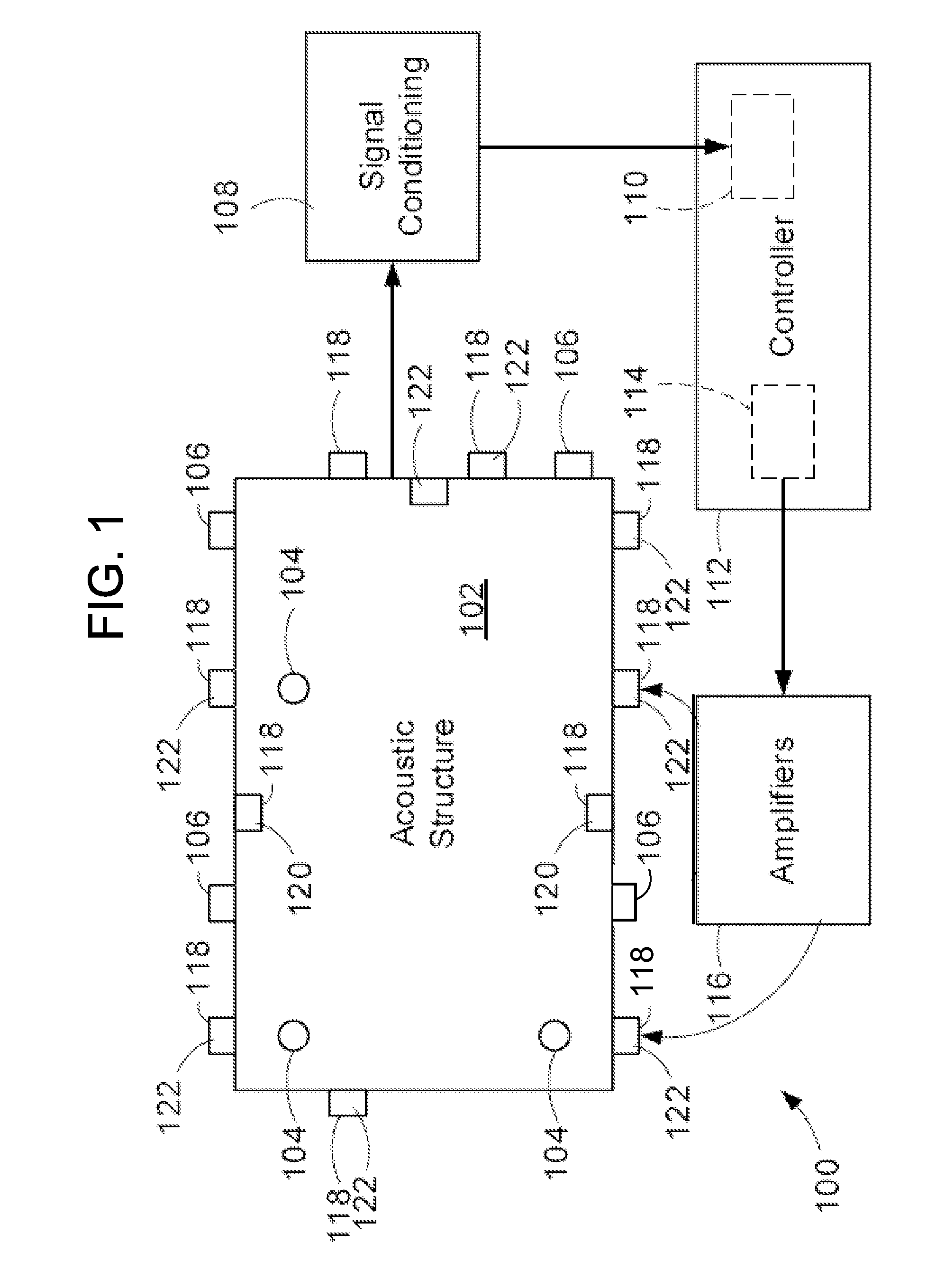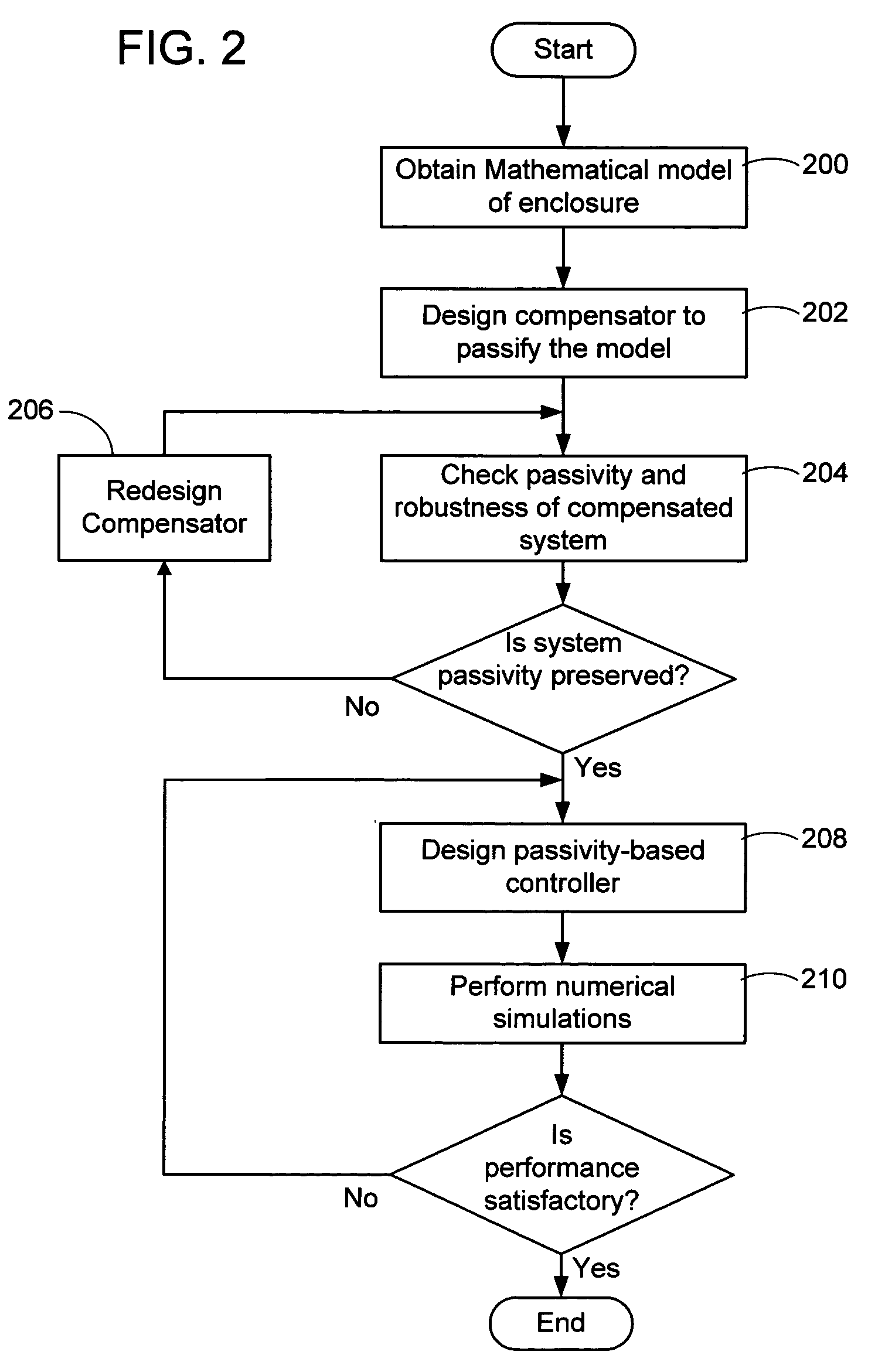Method and system to perform energy-extraction based active noise control
a technology of energy extraction and active noise, applied in adaptive control, process and machine control, instruments, etc., can solve the problems of difficult to achieve the effect of reducing structural and acoustic energy, avoiding noise pollution, and avoiding noise pollution
- Summary
- Abstract
- Description
- Claims
- Application Information
AI Technical Summary
Benefits of technology
Problems solved by technology
Method used
Image
Examples
Embodiment Construction
[0025]The invention extracts acoustic energy and structural energy in acoustic enclosures. The system utilizes acoustic sensors and actuators (e.g., microphones and loudspeakers) and actuators (e.g., accelerometers and piezoelectric devices) to reduce the acoustic energy and structural energy of the system. A compensator is designed to render the open-loop system passive in the sense of mathematical system theory. A positive-real feedback controller is then designed. The resulting system is typically a multi-input multi-output feedback control system that incorporates the passifier and the positive-real controller. The system can achieve uniform (in space and frequency) broadband reduction in noise and vibration levels in the enclosures. As a result, quieter aircraft fuselages, vehicles, vacuum cleaners, washers, dryers, lawn and garden equipment (e.g., power blowers, lawn mowers, snow blowers, etc.), and other industrial / household machinery such as grinding machines, milling machin...
PUM
 Login to View More
Login to View More Abstract
Description
Claims
Application Information
 Login to View More
Login to View More - R&D
- Intellectual Property
- Life Sciences
- Materials
- Tech Scout
- Unparalleled Data Quality
- Higher Quality Content
- 60% Fewer Hallucinations
Browse by: Latest US Patents, China's latest patents, Technical Efficacy Thesaurus, Application Domain, Technology Topic, Popular Technical Reports.
© 2025 PatSnap. All rights reserved.Legal|Privacy policy|Modern Slavery Act Transparency Statement|Sitemap|About US| Contact US: help@patsnap.com



